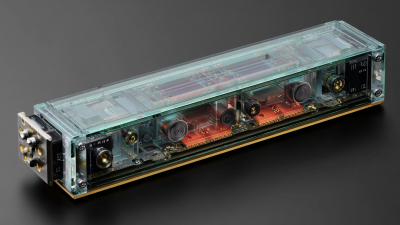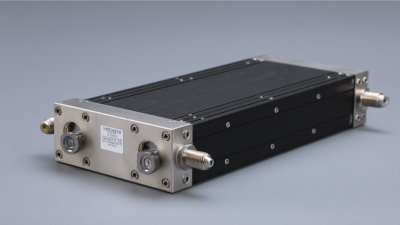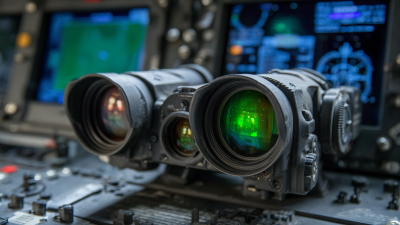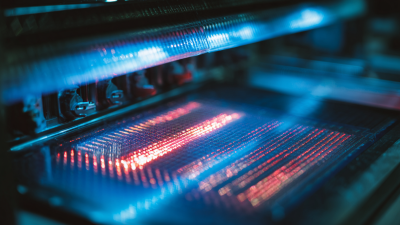Services
Ultimate Guide to Understanding Photocathode Image Intensifiers
In the realm of advanced imaging technologies, the Photocathode Image Intensifier (PII) stands out as a pivotal component for enhancing low-light visuals. According to a recent market analysis by ResearchAndMarkets, the global image intensifier market is projected to reach $5.2 billion by 2026, underscoring the increasing reliance on PIIs in various fields such as military surveillance, night vision systems, and medical imaging. As industries embrace the transformative capabilities of these devices, understanding the intricacies of Photocathode Image Intensifiers becomes essential. This guide will delve into the workings, types, and applications of PIIs, equipping readers with the knowledge to leverage this technology effectively in their respective domains. Through expert tips and insights, we aim to demystify the complexities of PIIs and highlight their significance in today's fast-evolving technological landscape.

The Science Behind Photocathode Image Intensifiers Explained
Photocathode image intensifiers are essential components in various imaging systems, converting low levels of light into a more manageable and observable signal. These devices operate by utilizing the photoelectric effect, where photons striking the photocathode material release electrons. This process is highly efficient, with certain materials offering quantum efficiencies over 30%, allowing for significant amplification of low light signals. A recent report by the International Society for Optics and Photonics highlights that advancements in photocathode materials, such as those based on cesium antimonide, have led to improved sensitivity and response times, making them invaluable in applications ranging from night vision goggles to scientific imaging.
The technology behind image intensifiers integrates multiple layers of materials to maximize electron multiplication through secondary emission. According to a study by the Institute of Electrical and Electronics Engineers, the gain factor in modern image intensifiers can exceed 10,000, showcasing their capacity to amplify even the faintest light. As a result, these systems are crucial in military, medical, and research fields, where visibility in low-light conditions is paramount. With ongoing research into new semiconductor materials and nanostructures, the future of photocathode image intensifiers promises further enhancements in performance, enabling new possibilities in imaging technology.
Photocathode Efficiency by Material Type
This chart illustrates the efficiency of different photocathode materials used in image intensifiers. The materials compared include Gallium Arsenide (GaAs), Multialkali, and Silicon, showcasing their relative quantum efficiency (QE) measured at peak sensitivity.
Key Components of Photocathode Image Intensifiers and Their Functions
Photocathode image intensifiers are sophisticated devices that amplify low levels of light to produce observable images, essential in various fields such as night vision, scientific imaging, and medical diagnostics. At the heart of these systems lies the photocathode, a crucial component made from materials that emit electrons when exposed to photons. This process, known as photoemission, allows the device to transform incoming light into a stream of electrons, which can then be further amplified to generate a visible image.
Beyond the photocathode, several other key components contribute to the functionality of image intensifiers. The microchannel plate (MCP) is one significant part, serving to multiply the number of electrons emitted by the photocathode dramatically. When electrons pass through the MCP, they collide with the channel walls and release additional electrons, thereby amplifying the signal. Following this, the phosphor screen converts the amplified electron stream back into visible light, creating a clear image that can be observed through optics. Understanding these components and their interactions is vital for grasping how photocathode image intensifiers work seamlessly to enhance and illuminate the world around us, even in the darkest conditions.
Application Areas: Where Photocathode Image Intensifiers Shine
Photocathode image intensifiers are pivotal in enhancing low-light imagery across various domains. One of the most prominent application areas is military and defense, where these technologies are crucial for night vision systems. By converting low levels of light into visible images, image intensifiers enable soldiers to navigate and operate effectively in darkness, significantly improving situational awareness and operational success.
Another significant application of photocathode image intensifiers is in the field of medical imaging. In procedures like fluoroscopy, these devices amplify the faint light emitted by radiopaque substances, providing clearer images of internal structures. This technological advancement enhances diagnostic accuracy and allows healthcare professionals to make better-informed decisions during critical examinations, ultimately leading to improved patient outcomes. As the demand for high-quality, low-light imaging continues to grow, the versatility of photocathode image intensifiers is set to expand across even more fields, including scientific research and industrial inspections.
Ultimate Guide to Understanding Photocathode Image Intensifiers - Application Areas: Where Photocathode Image Intensifiers Shine
| Application Area | Key Features | Benefits | Typical Uses |
|---|---|---|---|
| Military & Defense | High resolution, low-light performance | Enhanced situational awareness | Night vision goggles, surveillance equipment |
| Medical Imaging | Sensitivity to low levels of light | Improved diagnostic capabilities | Endoscopy, fluorescence imaging |
| Astronomy | High quantum efficiency | Enhanced faint object detection | Telescope imaging, photometry |
| Industrial Applications | Durable and reliable design | Higher efficiency in inspections | Quality control, manufacturing processes |
| Research & Development | Versatile range of applications | Facilitates innovative discoveries | Photon detection, imaging experiments |
Comparative Analysis: Best Photocathode Image Intensifiers on the Market
Photocathode image intensifiers are essential devices in low-light imaging applications, allowing for enhanced visibility in darkness. When evaluating the best options on the market, it’s crucial to consider factors such as sensitivity, resolution, and overall performance. Each photocathode material has distinct advantages, with common options including gallium arsenide (GaAs), cesium antimonide (CsSb), and multi-alkali photomultiplier tubes. GaAs models are renowned for their robustness and superior conversion efficiency in near-infrared ranges, making them ideal for specialized applications.
In a comparative analysis of top photocathode image intensifiers, models like the Photonis 18mm and the 25mm versions from Hamamatsu stand out significantly. The Photonis units excel in producing clear images with minimal noise, thanks to their advanced electronic design and high-quality photocathode. Meanwhile, Hamamatsu’s devices are favored for their compact size and versatility, catering to a wide range of imaging applications, from military to scientific research. When choosing the right image intensifier, it's essential to align the specific features with your application's requirements, ensuring maximum effectiveness and performance.

Future Innovations in Photocathode Technology and Image Intensification
As the demand for high-performance imaging solutions continues to rise, innovations in photocathode technology and image intensification are expected to transform various fields, from defense and security to medical diagnostics. One significant area of development is the enhancement of photocathode materials, which are crucial for determining the sensitivity and overall performance of image intensifiers. Researchers are exploring novel materials such as nanostructured semiconductors and advanced materials that offer improved quantum efficiency and lower noise levels, ultimately leading to better image clarity in low-light conditions.
Moreover, advancements in the integration of photocathode technology with digital processing systems are paving the way for smarter image intensifiers. By combining machine learning algorithms with image intensification, future systems could automatically adjust settings based on real-time environmental conditions, optimizing the imaging experience for users. With these innovations, we can expect breakthroughs that will not only improve traditional surveillance and nighttime vision applications but also expand the capabilities into fields such as augmented reality (AR) and autonomous vehicles, making enhanced visual perception a standard feature in our increasingly tech-driven world.

Related Posts
-

Elevating Global Standards with the Best Microchannel Plate Image Intensifier Made in China
-

Experience Cutting Edge Technology at the 138th Canton Fair with Digital Image Intensifiers
-

Ultimate Checklist for Sourcing the Best Microchannel Plate Image Intensifier Globally
-

Maximizing Value and Reducing Costs with Superior After Sales Support in Night Vision Technology
-

Understanding the Functionality and Applications of Mobile Image Intensifiers in Modern Technology
-

Ultimate Guide to Sourcing Microchannel Plate Image Intensifiers for Enhanced Imaging Solutions
